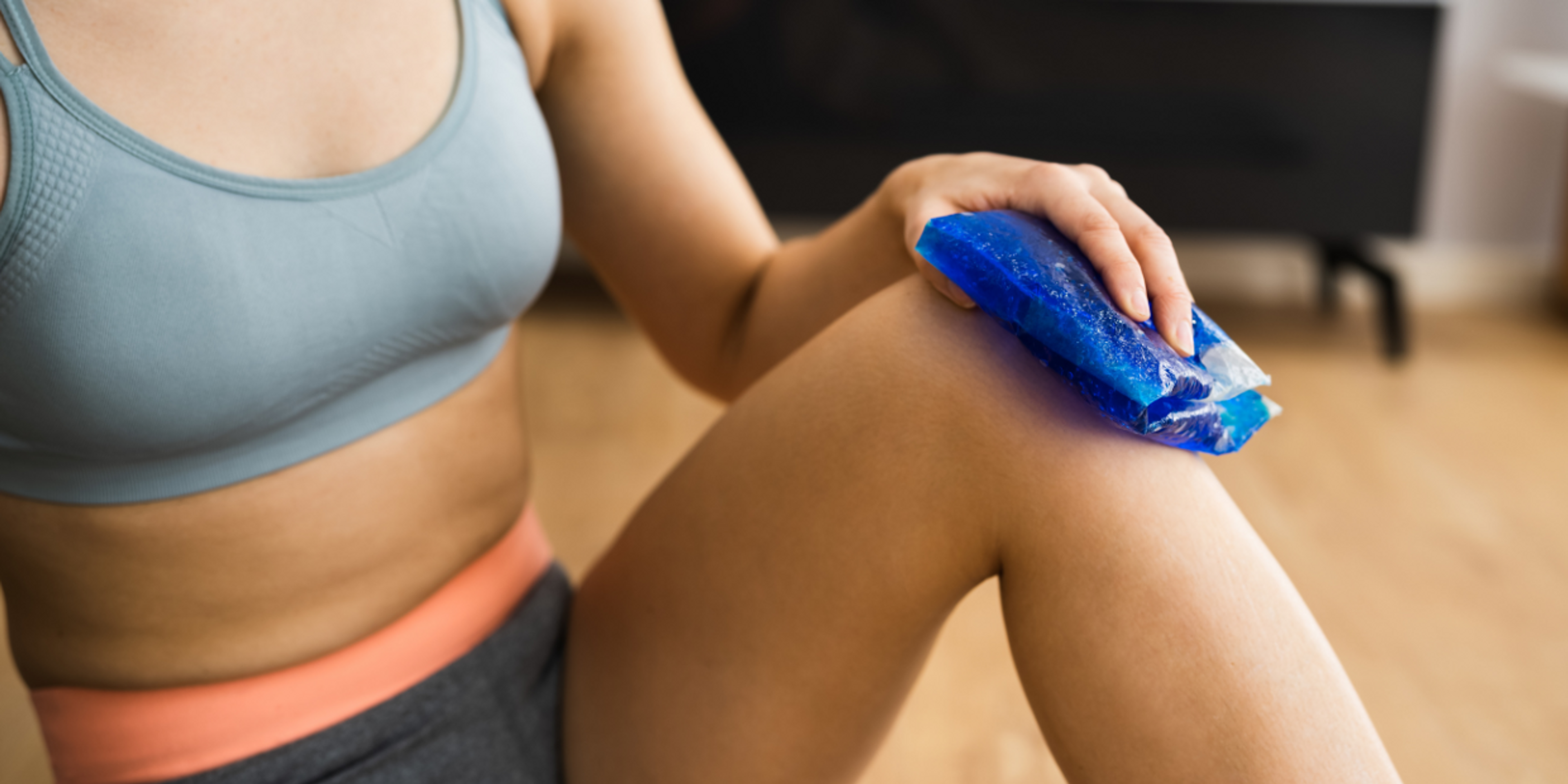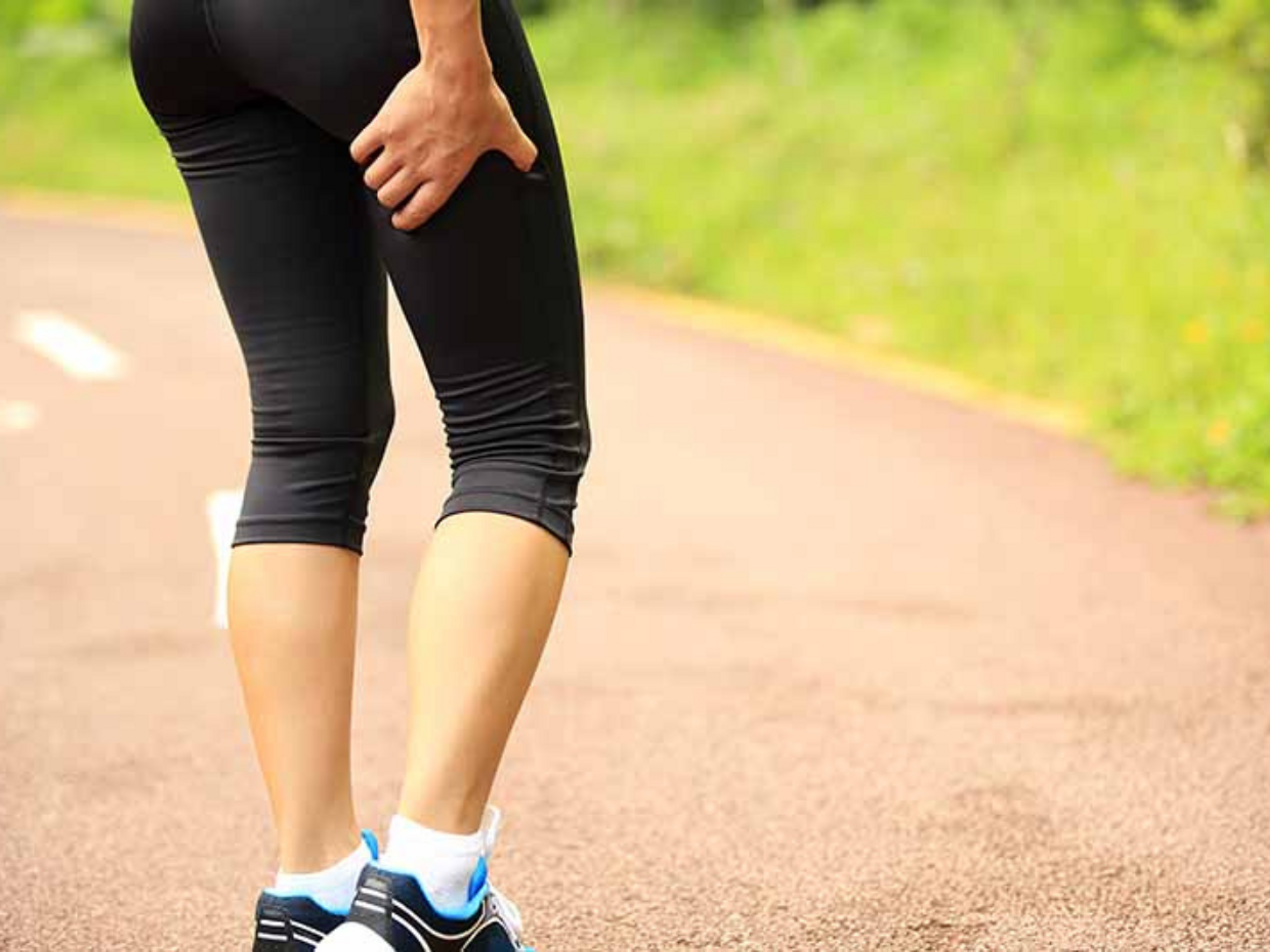Pulled hamstring: How to treat the bruise
We've also explained it in this video:
A quick recap on the anatomy and mechanism of a pulled hamstring
The main fleshy part of the hamstring muscles consists of thousands of muscle cells grouped in bundles.
These bundles are held together by a thin layer of fascia (that white, sinewy stuff in meat). One muscle contains lots and lots of these bundles. A layer of fascia also covers the muscle itself.
Blood vessels penetrate the fascial layer. The blood vessels divide until they are tiny enough to supply oxygen and nutrients to every cell.
Why do some hamstring strains bruise and others don't?
A bruise is an accumulation of dead or old blood under the skin. It forms whenever you injure a blood vessel. But you'll only see a bruise if the blood can get close to the skin - this can often take a few days.
For a bruise to disappear, the body has to absorb the dead blood and remove it via the lymph system.
When you strain your hamstring, you tear a few of the muscle cells and usually also some of the blood vessels. The infographic below lists the factors determining whether your hamstring strain will bruise.
Reasons a pulled hamstring bruises...or not
We've previously explained how to use the PRICE method and have summarized the best evidence-based treatments for hamstring strains here.
Why bruising can occur lower down the leg
Are you wondering why your pulled hamstring bruise is so low down – around your knee or even in your calf? This is quite common because gravity pulls the old blood towards the floor.
How to get rid of the bruise from a pulled hamstring
Most bruises will disappear within 14 days without you doing anything to help it along. As it resolves, it usually turns from deep purple to green and finally yellow.
Getting rid of the bruise won't make your injury heal more quickly, so don't worry about it too much. However, if you want to get rid of the bruise more quickly, the following treatments may be useful.
1. Arnica oil
There is some evidence that applying a 20% Arnica solution may be beneficial. Solutions of 10% or less don't seem to work.
2. Kinesiology tape
Kinesiology tape is claimed to improve lymph drainage, which may improve how quickly your body can get rid of waste products (like dead blood).
There's currently a lack of research that supports this claim. Still, some very convincing real-life evidence suggests it may be worth trying.
If you google "k tape bruising", you'll see plenty more pictures like this one.
3. Contrast therapy
Some people use contrast therapy, alternating between applying heat and cold to the area. The idea is that it increases the blood flow, which may help to remove the dead blood more quickly.
Once again, no research supports or refutes this method, so it may or may not work.
However, please DON'T use contrast therapy in the first 72 hours after pulling your hamstring, as you can actually cause more bleeding and bruising by doing it before your injury has had time to settle.
Remember, while managing bruises can help the injury look better, it's not a direct indicator of the healing process of the underlying muscle injury. The most effective treatment identified in the research is combining rest with rehab exercises.
If you're looking for a structured and effective rehabilitation plan for your hamstring strain, consider downloading the Exakt Health app. The app offers personalized rehabilitation plans tailored to your specific injury and recovery needs. It's designed to guide you through your recovery journey with evidence-based exercises.




